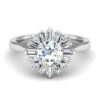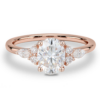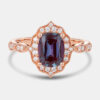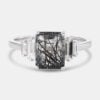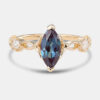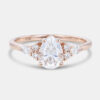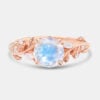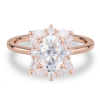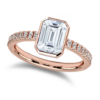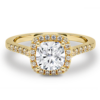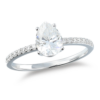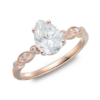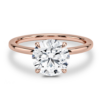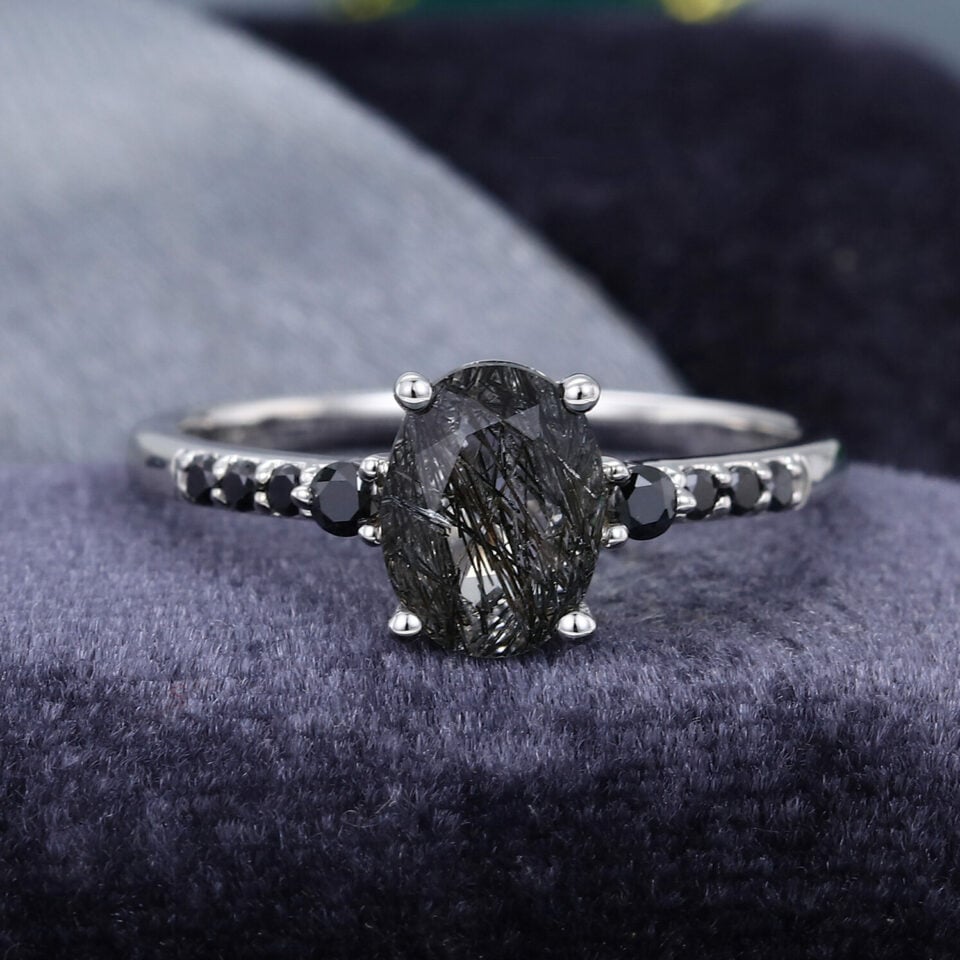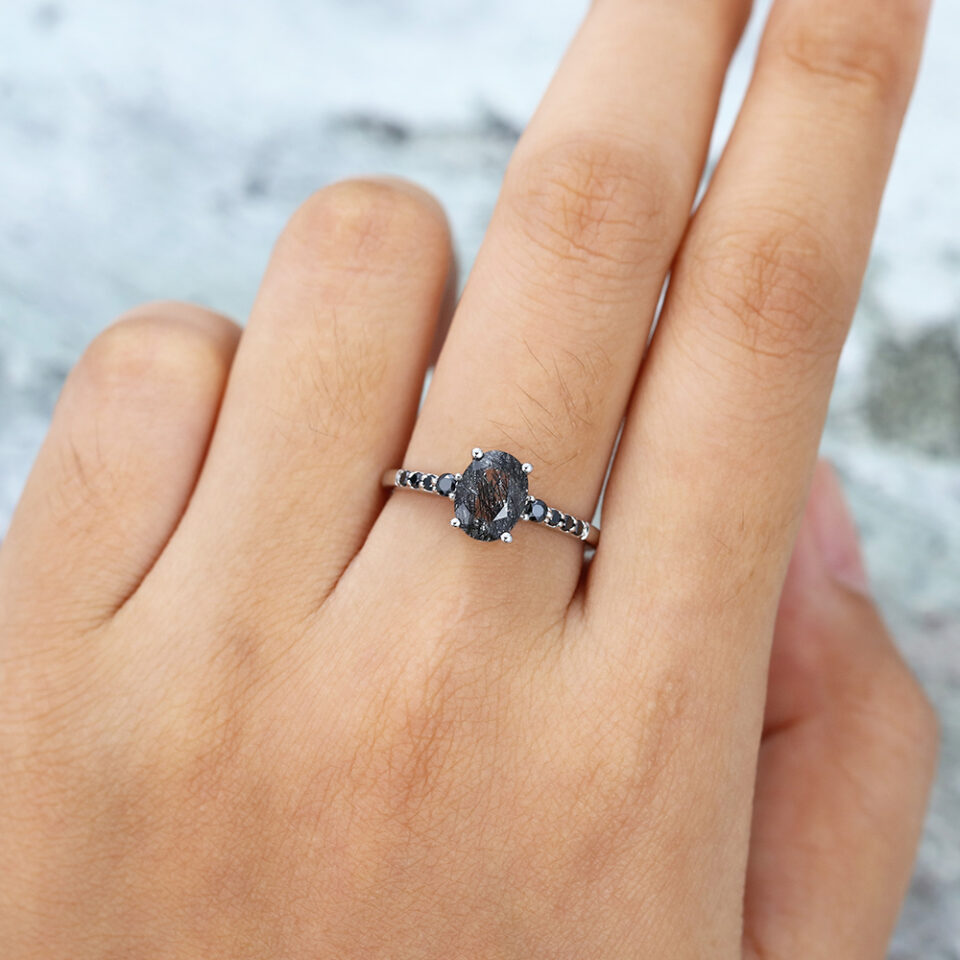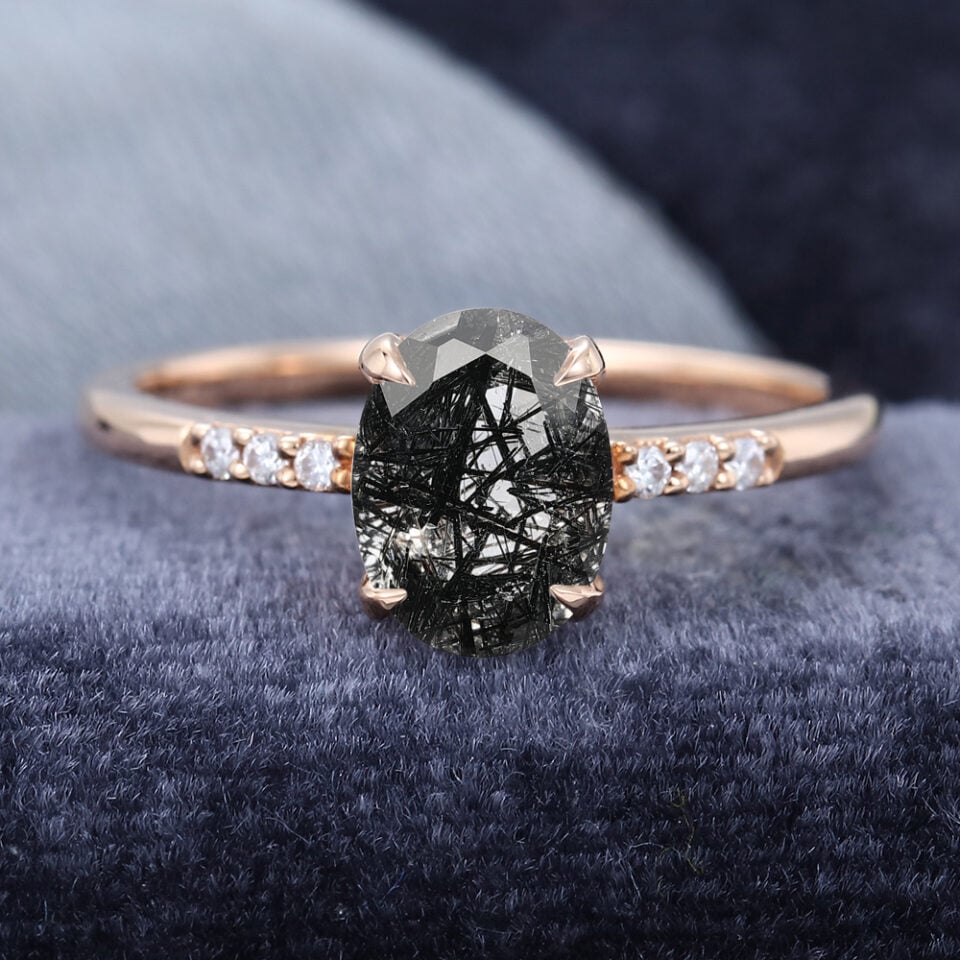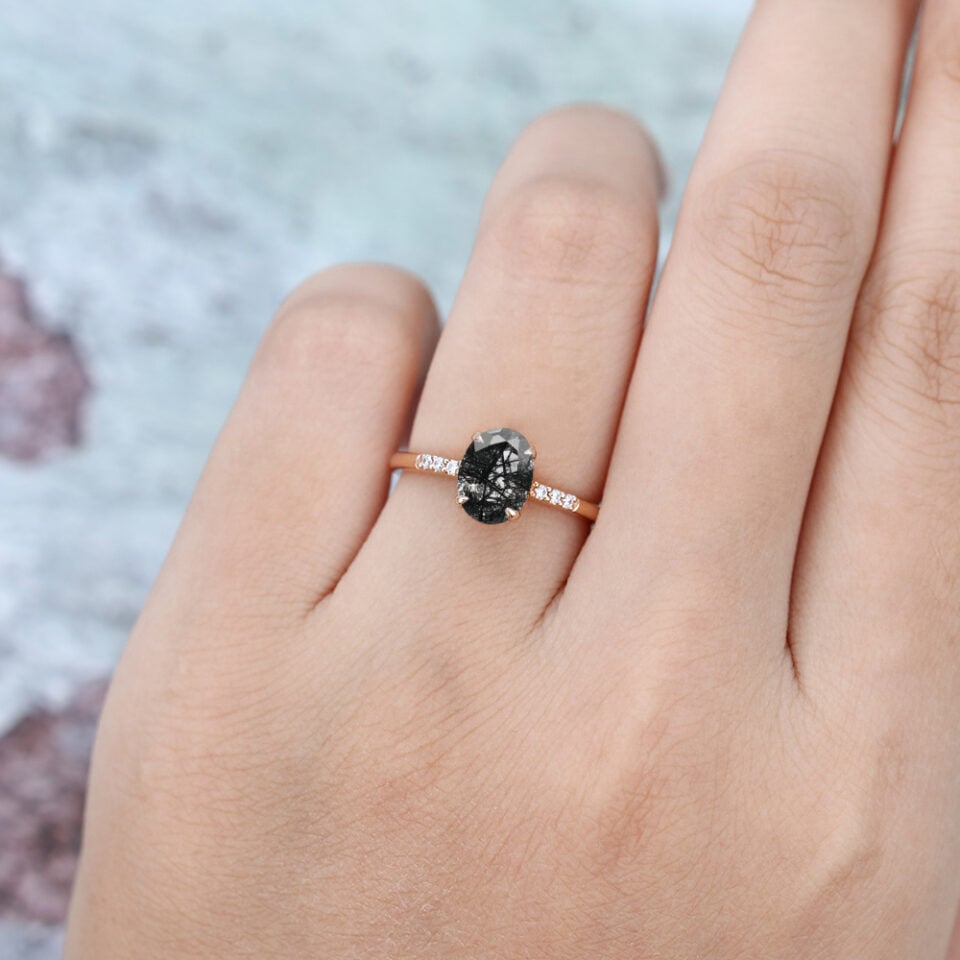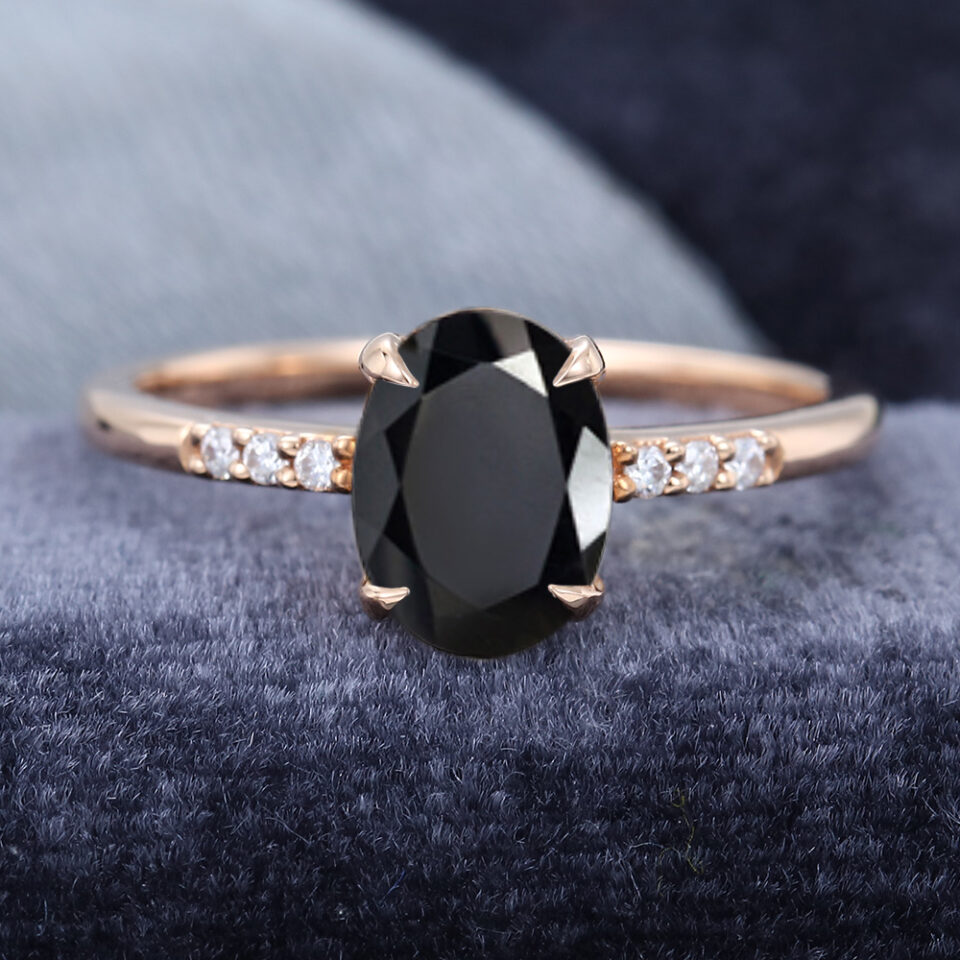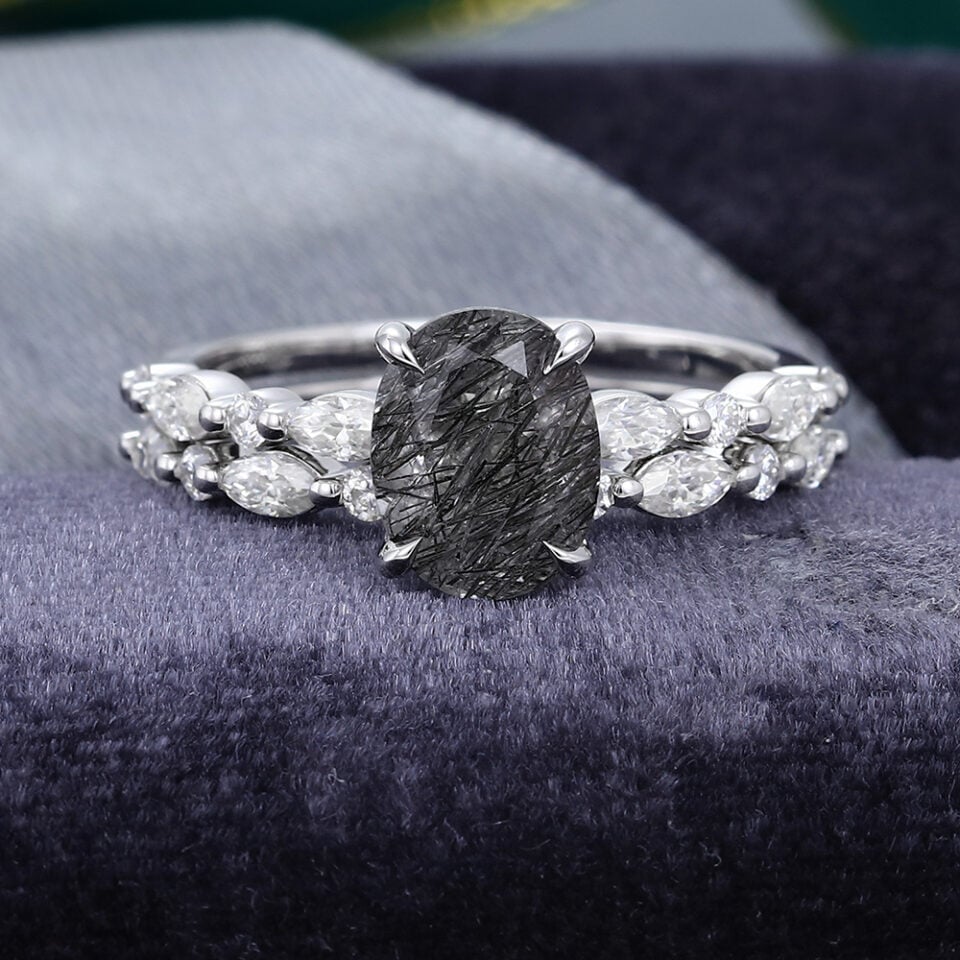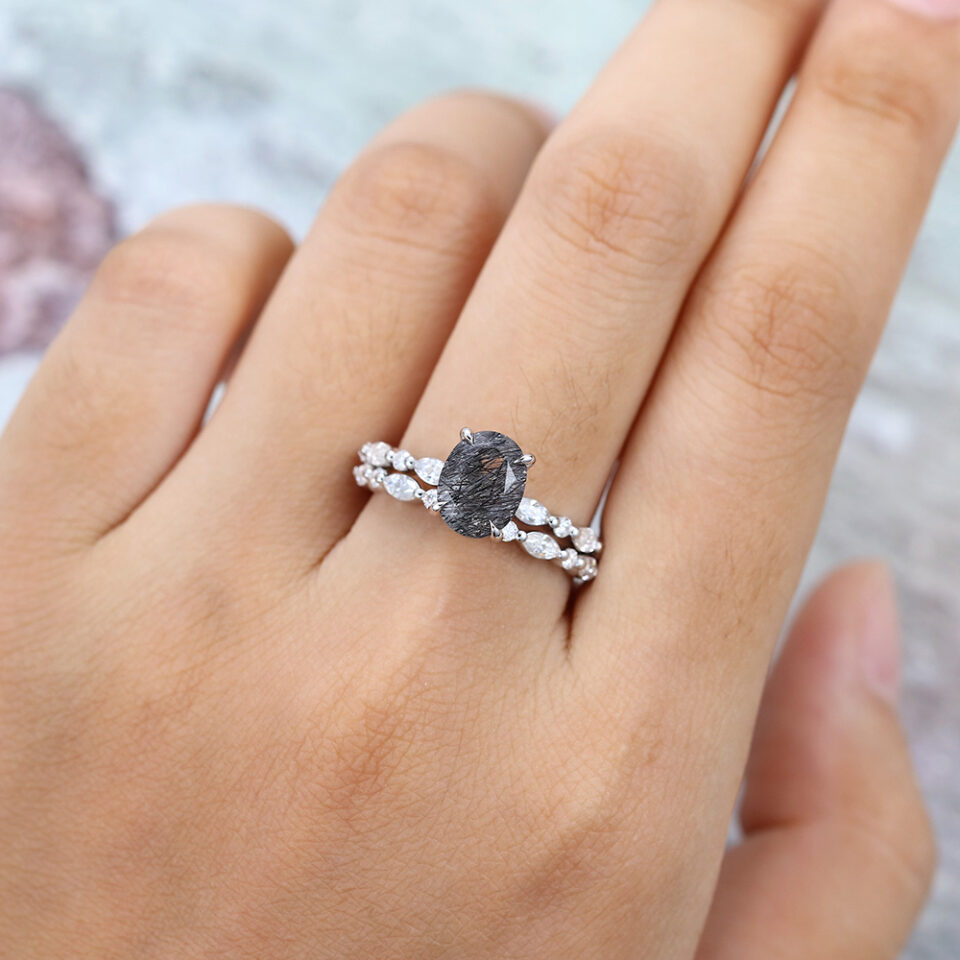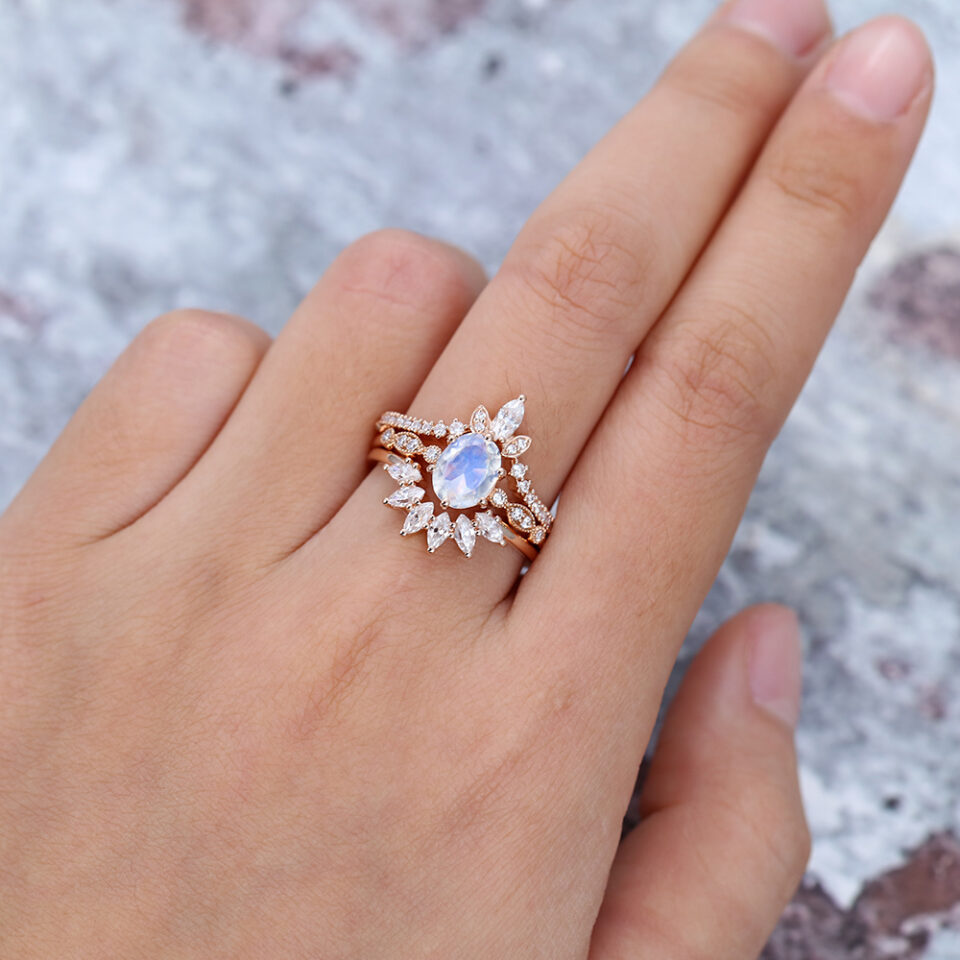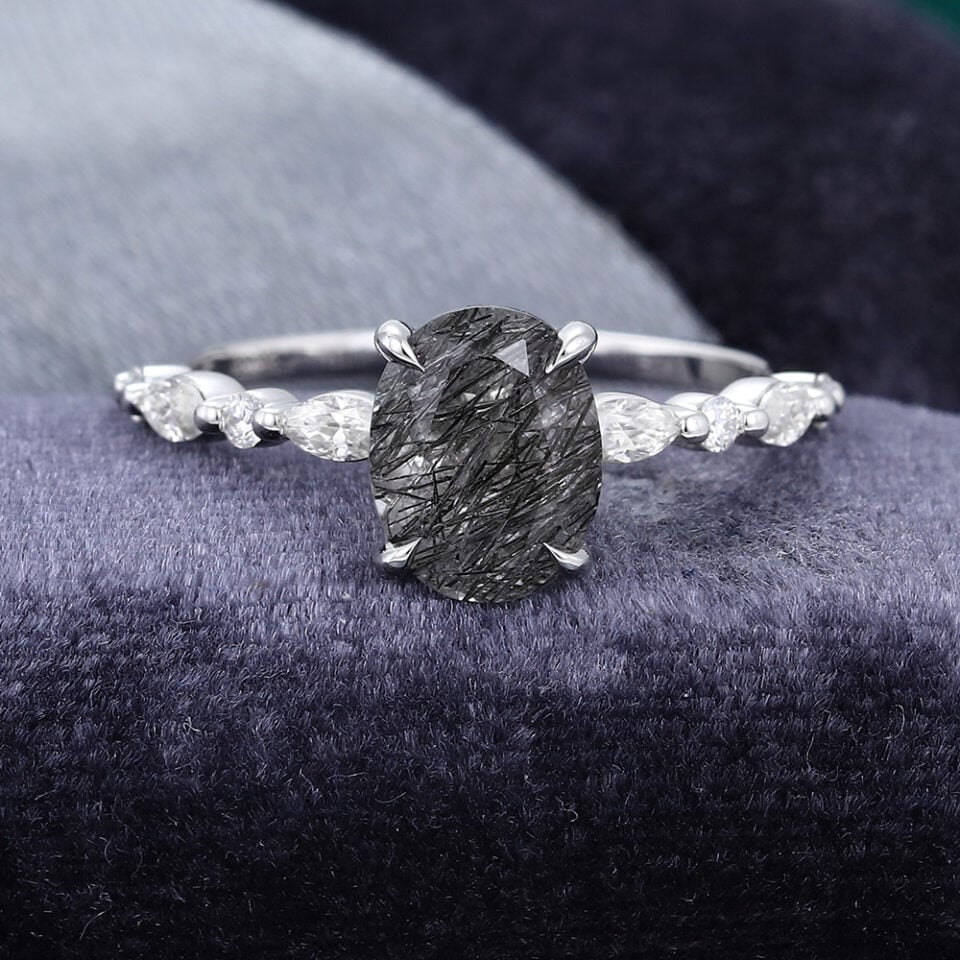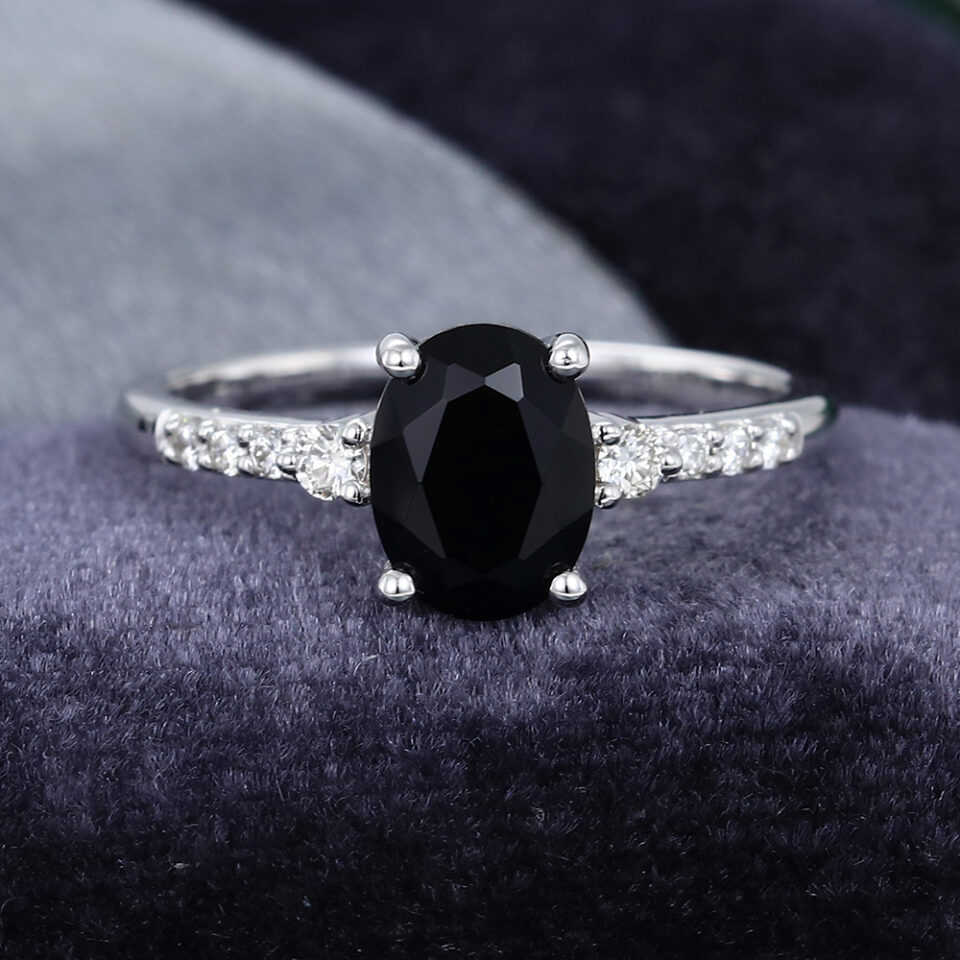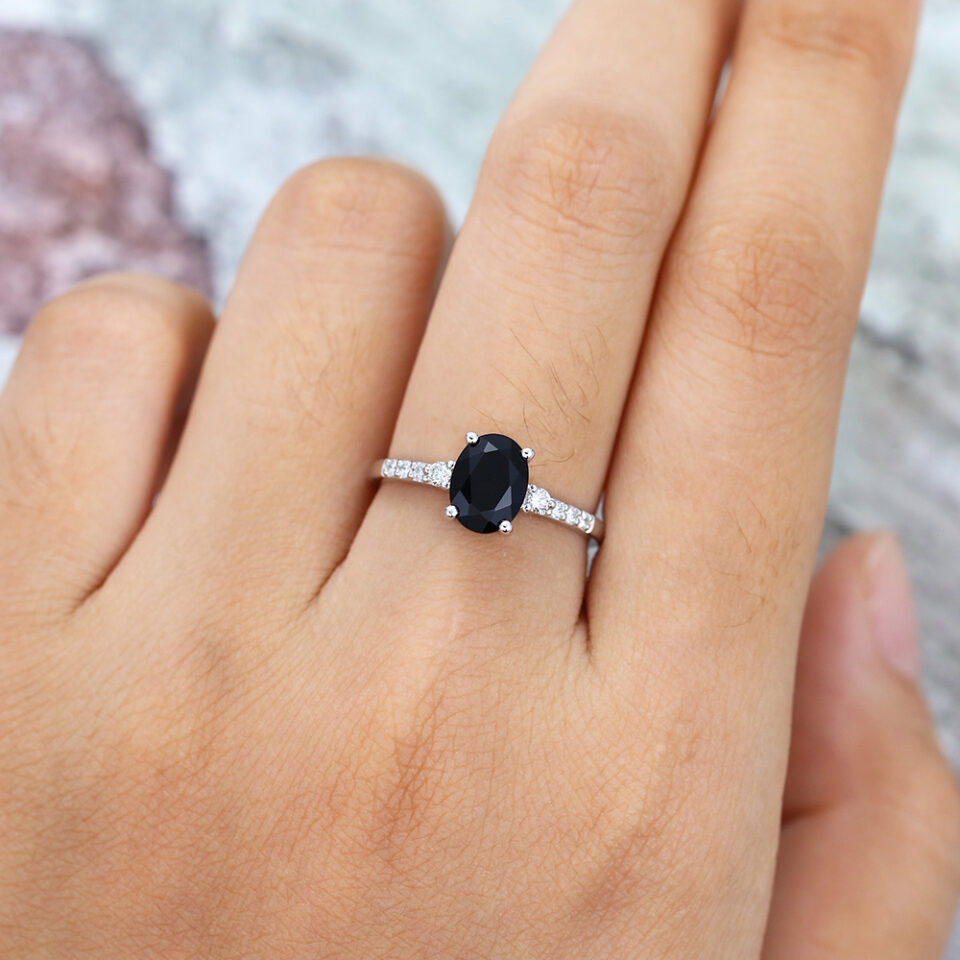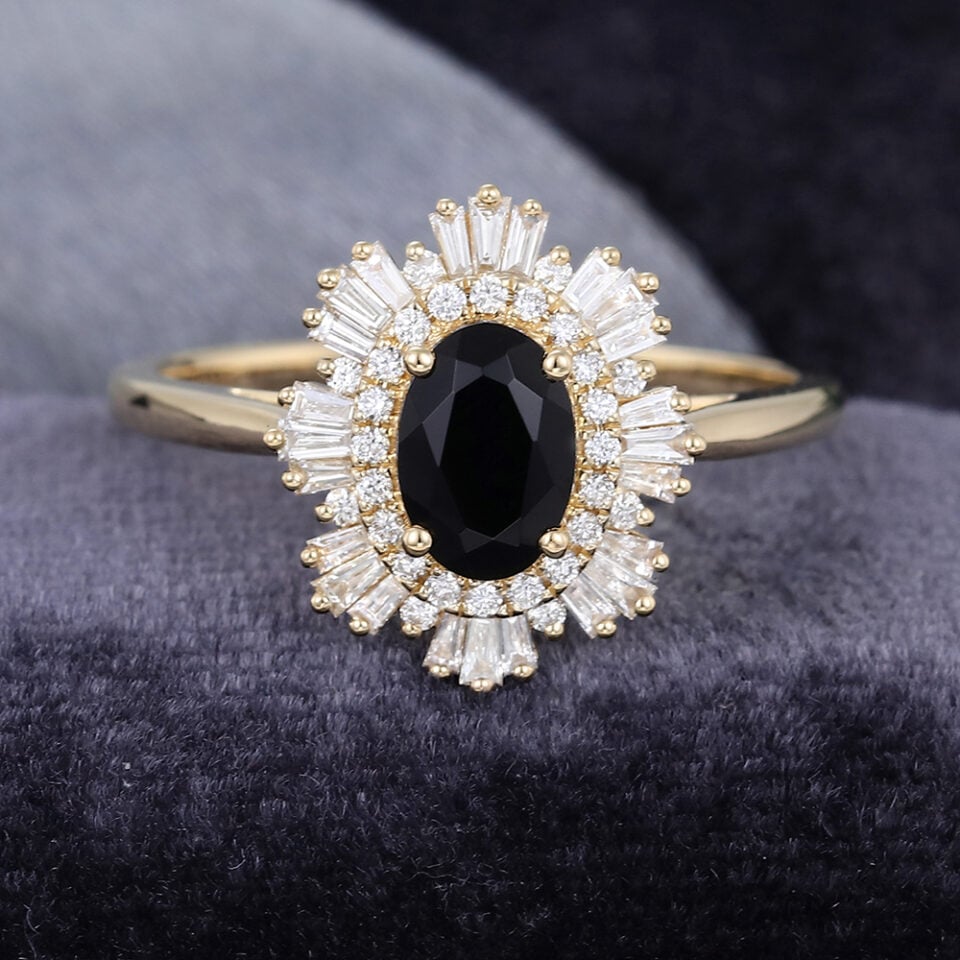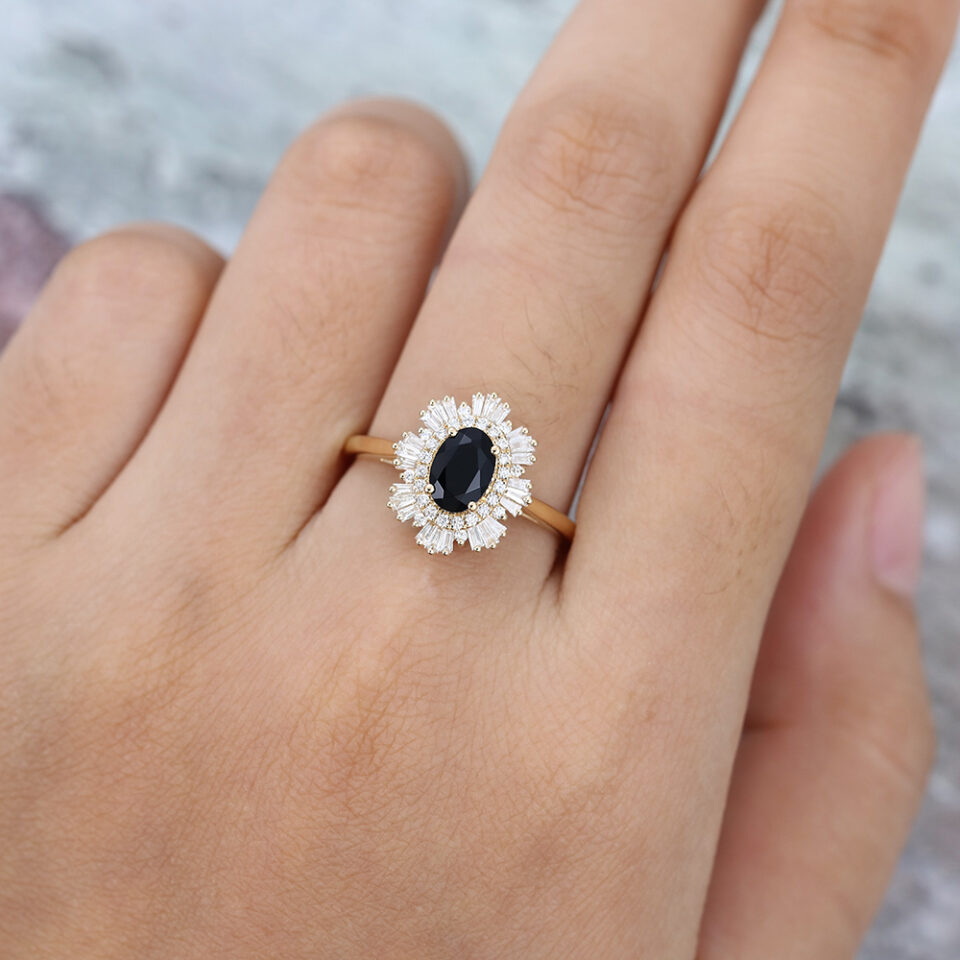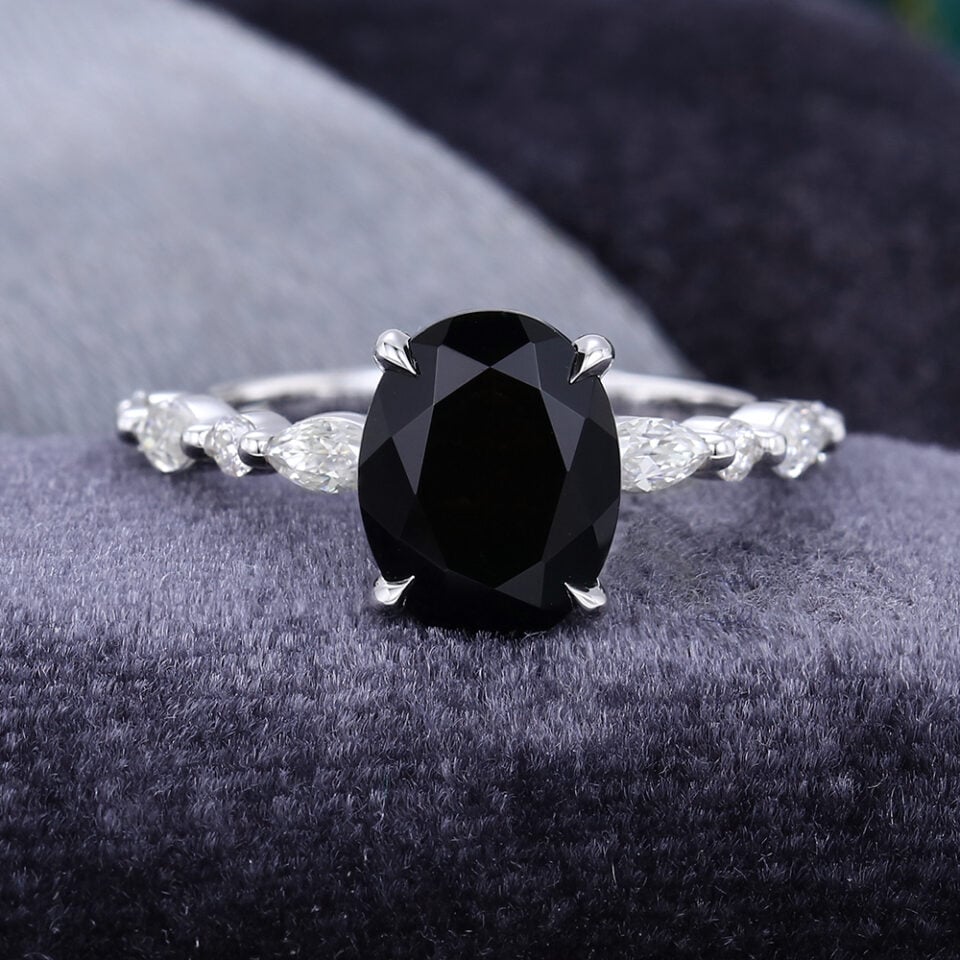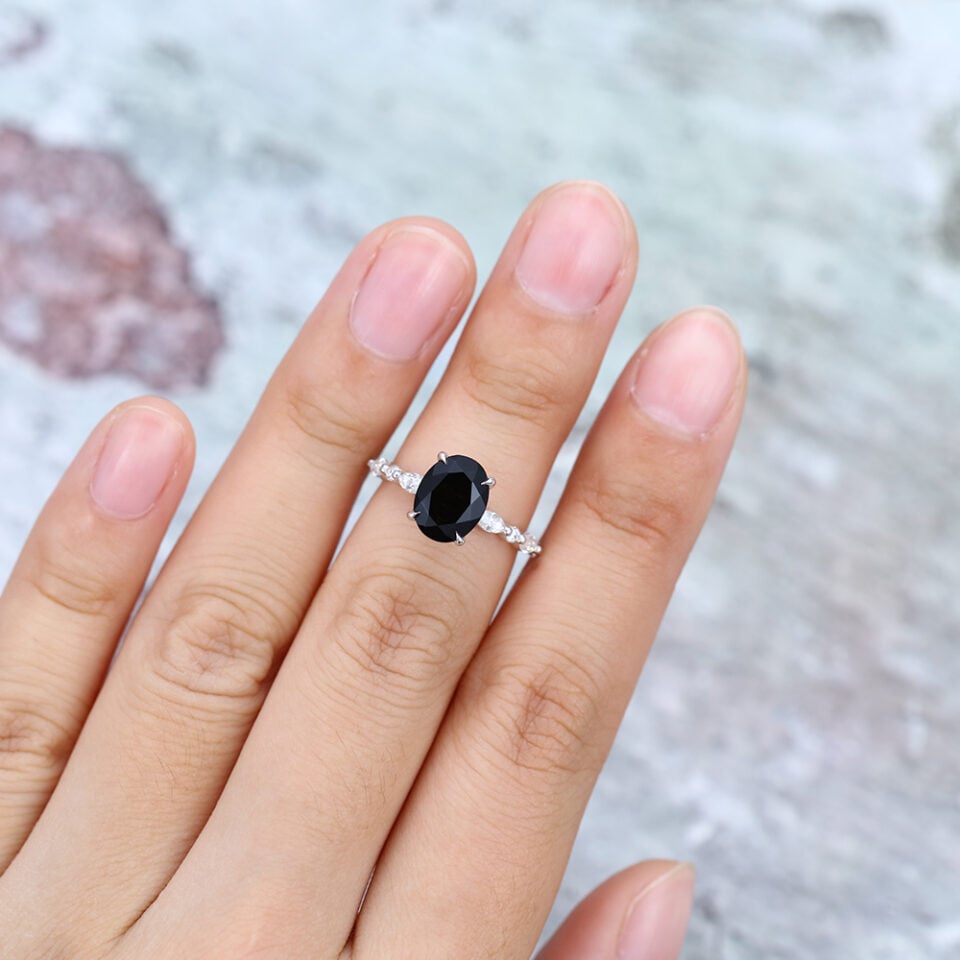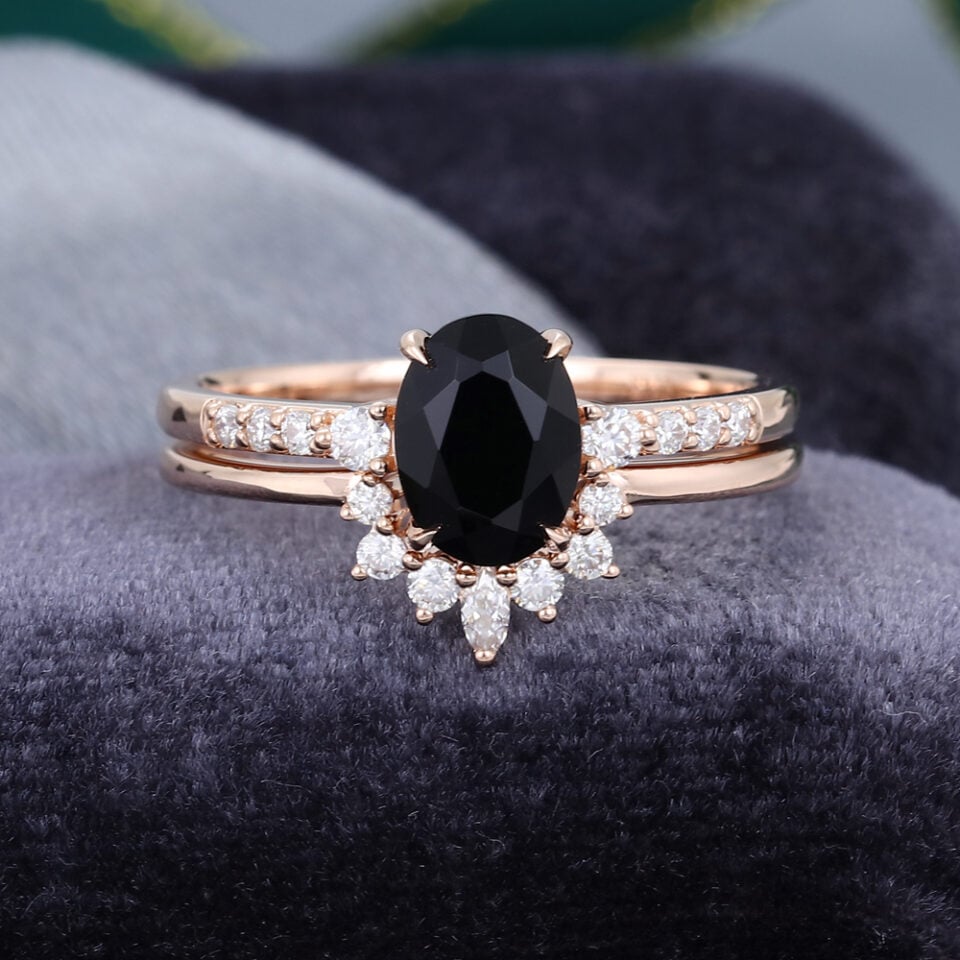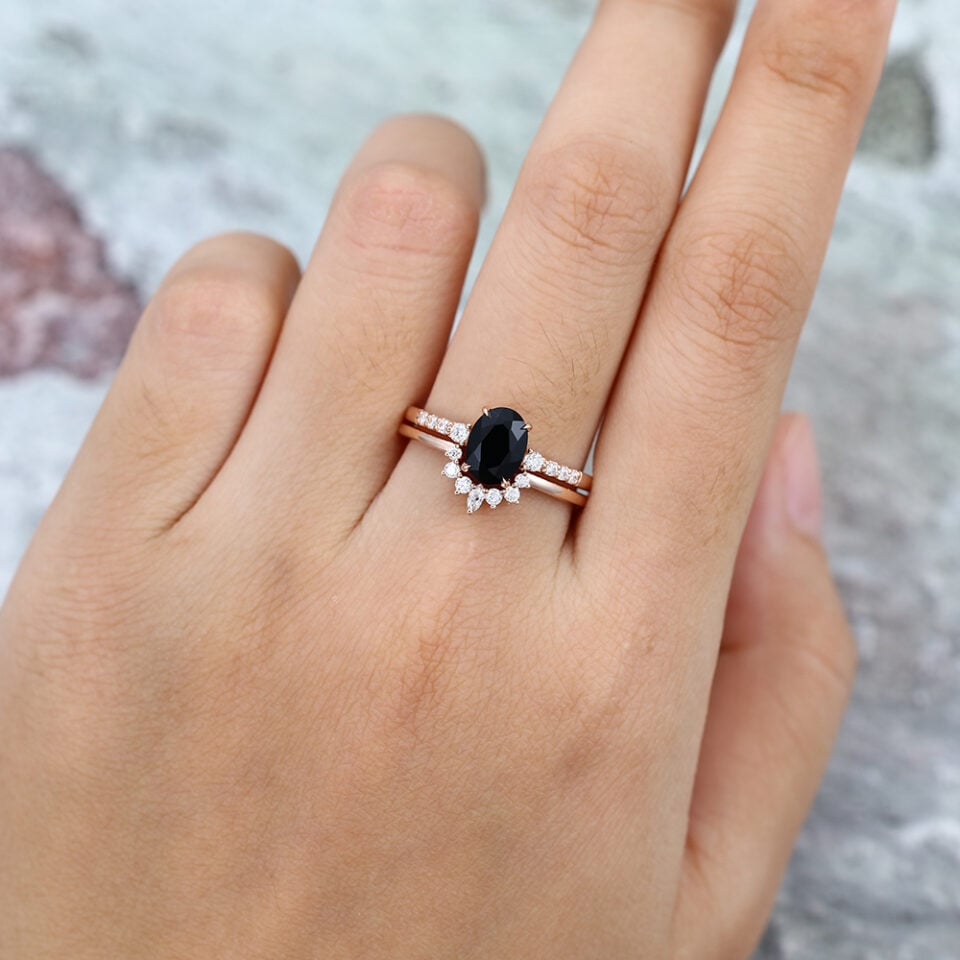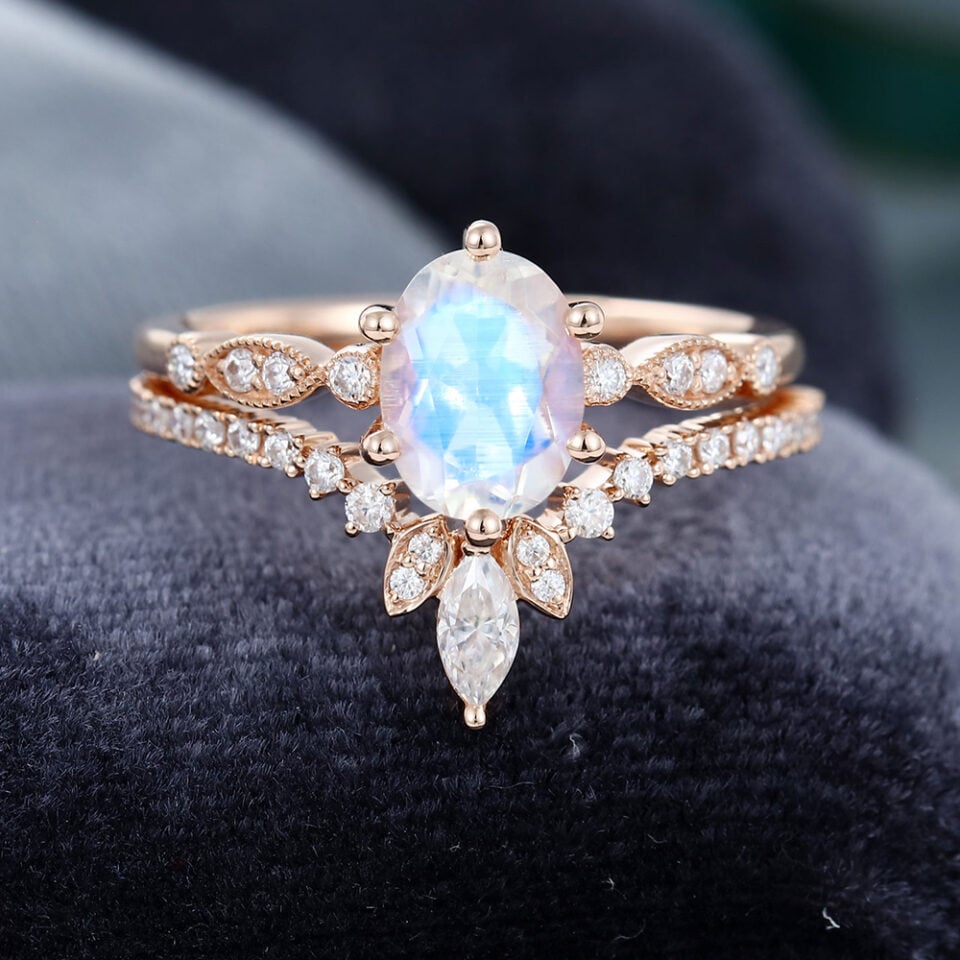CoolringJewelry Oval cut engagement rings are the epitome of timeless elegance and modern sophistication. Their elongated shape, which combines the brilliance of a round diamond with a unique twist, creates a striking, eye-catching centerpiece. At the heart of romance and grace, these rings offer a larger appearance, making them perfect for those who seek a bold yet graceful statement. Oval cut diamonds are known for their fire and brilliance, captivating onlookers with their stunning play of light. Whether set in a classic solitaire, a vintage-inspired halo, or a sleek, contemporary design, CoolringJewelry oval cut engagement rings promise enduring beauty and symbolize everlasting love.
Oval Cut
Showing 1–20 of 47 results
Oval cutting is a classic and versatile gemstone faceting technique renowned for its elegant elliptical shape. This popular cut combines the brilliance of the round brilliant cut with elongated proportions, creating a visually appealing gemstone. With a standard length-to-width ratio of about 1.5, ovals exude a balanced and timeless aesthetic, but variations in this ratio offer unique design possibilities. Known for their exceptional brilliance and fire, oval cut gemstones are suitable for a wide range of precious stones, including diamonds and colored gems. Their adaptability and optical qualities make them a sought-after choice for a variety of jewelry, from engagement rings to pendant drops.
Gem cutting, also known as lapidary, involves shaping and polishing gemstones to enhance their appearance and value. There are several common gem cutting methods, each suited to different types of gemstones and desired results. Here are some of the common gem cutting methods:
- Brilliant Cut:
This is the most common and traditional cut for diamonds. It features 57 or 58 facets that maximize the stone’s brilliance and fire. The round brilliant cut is the most well-known.
Step cuts, such as the emerald cut, involve long, rectangular facets that create a stepped appearance. This cut is used for gemstones like emeralds and rectangular diamonds.
- Princess Cut:
The princess cut is a square or rectangular cut with pointed corners. It’s often used for diamonds and other transparent gems.
Oval cuts have a similar brilliance to round cuts but with a more elongated shape. They are used for a variety of gems, including sapphires and emeralds.
Pear cuts resemble a teardrop and are used for various gems. They can be set as pendants or in rings.
Marquise cuts are elongated and pointed at both ends, creating a boat-like shape. They are often used for diamonds.
- Cabochon Cut:
Cabochon cutting involves shaping a gem into a smooth, rounded, and polished shape without facets. This cut is commonly used for opaque gemstones like opals and moonstones.
- Rose Cut:
The rose cut is a historical cut with a flat bottom and a domed, faceted top resembling a rosebud. It’s commonly used for diamonds and other transparent gems.
The cushion cut is a square or rectangular cut with rounded corners, which gives the gem a softer appearance. It’s used for a variety of gemstones.
Gem cutting requires skill and precision to maximize a stone’s beauty and value, and the choice of cut depends on the type of gemstone, its quality, and the desired final appearance. Different cuts can bring out various optical properties, such as brilliance, fire, and color, in a gem.
Oval Cut Engagement Ring FAQ
The cost of an oval cut diamond, like any other diamond, is determined by several factors, including the diamond’s 4Cs (Carat weight, Cut quality, Color, and Clarity), as well as market demand and supply. The cut quality, in particular, plays a significant role in determining a diamond’s price.
Oval cut diamonds, in general, tend to be less expensive than round brilliant cut diamonds of the same carat weight and quality. This is because oval cuts can often be more efficient in terms of retaining carat weight from the rough diamond during the cutting process. Oval cuts have a larger surface area relative to their carat weight compared to round cuts, which can make them more affordable on a per-carat basis.
However, it’s essential to consider the other factors when assessing the cost of an oval cut diamond. The diamond’s color, clarity, and overall quality will have a substantial impact on its price. Additionally, factors like fluorescence and market demand can influence pricing. Highly desirable oval cut diamonds with excellent cut quality, color, and clarity may still command a premium.
To get an accurate understanding of the price of an oval cut diamond, it’s best to consult with reputable jewelers and compare multiple diamonds with similar specifications. Keep in mind that personal preferences for diamond characteristics, such as color and clarity, can also affect the perceived value and price you are willing to pay for an oval cut diamond.
Yes, oval cut diamonds can appear larger compared to round brilliant cut diamonds of the same carat weight. This visual effect is due to the elongated shape of oval cut diamonds, which creates the illusion of greater size. Here’s why:
Surface Area: Oval cut diamonds have a larger surface area relative to their carat weight compared to round brilliant cut diamonds. This means that when you look at an oval cut diamond from the top (the table), it can seem more significant than a round diamond with the same carat weight.
Length-to-Width Ratio: You can choose the length-to-width ratio for an oval cut diamond to suit your preferences. Some people prefer a more elongated shape, while others opt for a slightly rounder one. This customization allows you to select an oval cut that visually enlarges the appearance of the diamond.
Finger Coverage: When an oval cut diamond is set in a ring, it can provide excellent finger coverage. The elongated shape can make your finger appear slimmer, and the diamond may cover more of the width of the band, enhancing the impression of size.
It’s important to note that the elongated shape of oval cut diamonds may also make them look different from round diamonds. Some people appreciate this distinctive appearance, while others have a preference for the classic round brilliant cut. Ultimately, the choice between an oval cut and a round brilliant cut diamond depends on your personal taste and the visual effect you desire in your jewelry.
The cut grading for oval diamonds may vary slightly depending on the grading organization or laboratory, but one of the most well-known and widely used systems is the one developed by the Gemological Institute of America (GIA). GIA uses a cut grading scale for round brilliant diamonds, and they do not assign traditional cut grades like “Excellent,” “Very Good,” and so on for fancy-shaped diamonds, including ovals. Instead, GIA provides specific information about the diamond’s proportions, symmetry, and other factors that contribute to its overall cut quality.
Here are the key factors that GIA considers when assessing the cut of oval diamonds:
Proportions: GIA provides information on the length-to-width ratio and the depth percentage of the oval diamond. Well-proportioned ovals are generally more desirable.
Symmetry: GIA evaluates the evenness of the diamond’s shape, the alignment of its facets, and the overall symmetry of the stone.
Polish: GIA assesses the quality of the diamond’s surface finish, including the absence of visible blemishes.
Bow-Tie Effect: GIA provides information about the presence and visibility of the “bow-tie” effect, a dark area that can form in the center of some oval diamonds. This effect is more pronounced in poorly cut ovals.
Overall Appearance: GIA offers an overall assessment of the diamond’s visual appeal, taking into consideration how it looks to the naked eye.
While GIA doesn’t assign specific cut grades to oval diamonds, the information provided in the diamond’s grading report can help you assess its overall cut quality. Look for diamonds with well-proportioned ovals, excellent symmetry, and good surface finish to ensure you’re getting a well-cut oval diamond with excellent visual performance.
An oval cut diamond typically has 57 or 58 facets, depending on whether it has a culet or not. These facets are arranged in a specific pattern to maximize the diamond’s brilliance and fire. The facets include both the crown (top portion) and the pavilion (bottom portion) of the diamond.
Here’s a breakdown of the facets in an oval cut diamond:
Crown Facets: The crown of the oval diamond, the top portion, includes a combination of triangular and kite-shaped facets. These facets are designed to reflect and refract light, enhancing the diamond’s sparkle and brilliance.
Pavilion Facets: The pavilion, the bottom portion of the diamond, also contains triangular and kite-shaped facets, which help in the reflection and dispersion of light within the stone.
Table Facet: The largest facet on the top of the diamond is the table facet. It’s a flat, polished surface that you can see when you look down at the diamond from above.
Culet (Optional): Some oval cut diamonds have a small facet at the very bottom called a culet. It’s designed to protect the tip of the diamond and prevent it from chipping. Not all oval diamonds have a culet, and the presence or absence of one will affect the total facet count.
Oval diamonds are known for their excellent brilliance due to their facet arrangement, and when well-cut, they can exhibit a beautiful play of light and sparkle. The precise number and arrangement of facets can vary slightly from one oval diamond to another, but they all follow a general pattern designed to maximize their optical properties.


